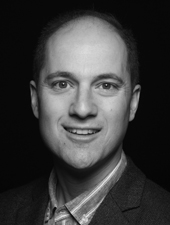Cornejo, O. E., Lefebure, T., Bitar, P. D., Lang, P., Richards, V. P., Eilertson, K., Do, T., Beighton, D., Zeng, L., Ahn, S. J., Burne, R. A., Siepel, A., Bustamante, C. D., Stanhope, M. J. (April 2013) Evolutionary and population genomics of the cavity causing bacteria Streptococcus mutans. Mol Biol Evol, 30 (4). pp. 881-93. ISSN 0737-4038
Abstract
Streptococcus mutans is widely recognized as one of the key etiological agents of human dental caries. Despite its role in this important disease, our present knowledge of gene content variability across the species and its relationship to adaptation is minimal. Estimates of its demographic history are not available. In this study, we generated genome sequences of 57 S. mutans isolates, as well as representative strains of the most closely related species to S. mutans (S. ratti, S. macaccae, and S. criceti), to identify the overall structure and potential adaptive features of the dispensable and core components of the genome. We also performed population genetic analyses on the core genome of the species aimed at understanding the demographic history, and impact of selection shaping its genetic variation. The maximum gene content divergence among strains was approximately 23%, with the majority of strains diverging by 5-15%. The core genome consisted of 1,490 genes and the pan-genome approximately 3,296. Maximum likelihood analysis of the synonymous site frequency spectrum (SFS) suggested that the S. mutans population started expanding exponentially approximately 10,000 years ago (95% confidence interval [CI]: 3,268-14,344 years ago), coincidental with the onset of human agriculture. Analysis of the replacement SFS indicated that a majority of these substitutions are under strong negative selection, and the remainder evolved neutrally. A set of 14 genes was identified as being under positive selection, most of which were involved in either sugar metabolism or acid tolerance. Analysis of the core genome suggested that among 73 genes present in all isolates of S. mutans but absent in other species of the mutans taxonomic group, the majority can be associated with metabolic processes that could have contributed to the successful adaptation of S. mutans to its new niche, the human mouth, and with the dietary changes that accompanied the origin of agriculture.
| Item Type: | Paper |
|---|---|
| Uncontrolled Keywords: | Adaptation, Biological/genetics Carbohydrate Metabolism/genetics Dental Caries/microbiology *Evolution, Molecular Gene Frequency Genome, Bacterial Humans Likelihood Functions Linkage Disequilibrium *Metagenomics Models, Genetic Polymorphism, Single Nucleotide Recombination, Genetic Selection, Genetic Streptococcus mutans/*genetics |
| Subjects: | organism description > bacteria evolution bioinformatics > genomics and proteomics > genetics & nucleic acid processing > genomes |
| CSHL Authors: | |
| Communities: | CSHL labs > Siepel lab |
| Depositing User: | Matt Covey |
| Date: | April 2013 |
| Date Deposited: | 14 Jan 2015 20:51 |
| Last Modified: | 14 Jan 2015 20:51 |
| PMCID: | PMC3603310 |
| Related URLs: | |
| URI: | https://repository.cshl.edu/id/eprint/31056 |
Actions (login required)
 |
Administrator's edit/view item |
